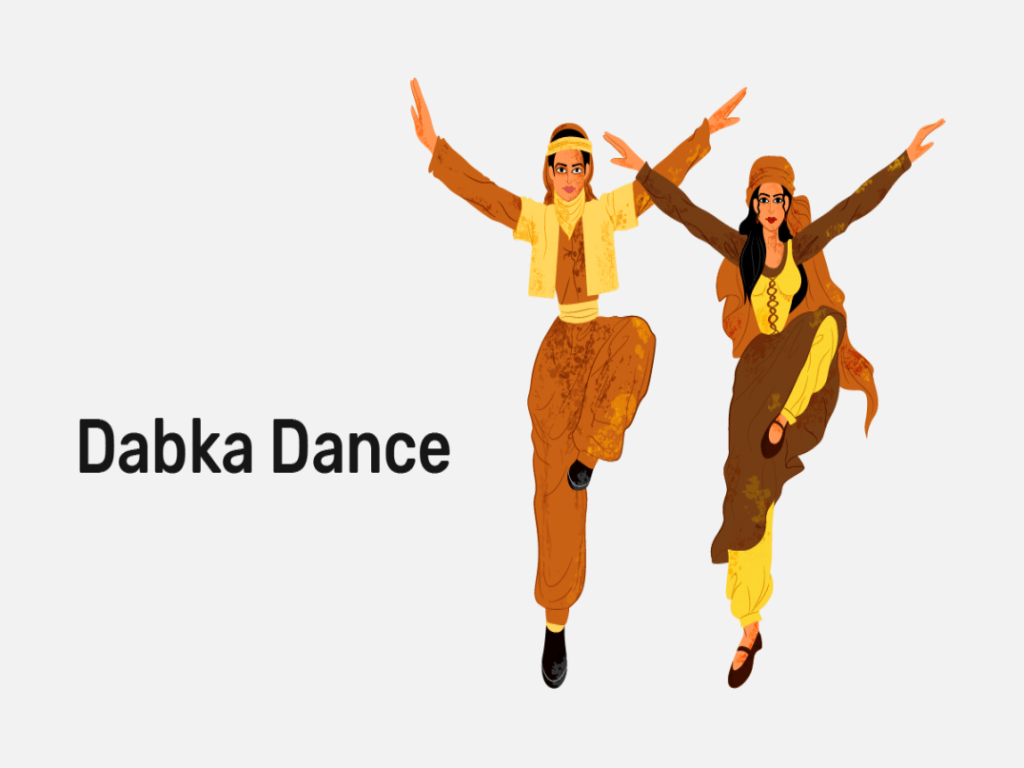Welcome to the world of Dabke! This isn’t just a folk dance; it tells a story of the history, life, and culture of the people of the Levant. The word Dabke means “stamping the feet,” a name that perfectly describes its powerful and harmonious main movement. This celebration of life and unity happens with every step.
Origin and History of Dabke
The roots of this dance, for instance, go back hundreds of years to the mountain villages of Palestine, Lebanon, Syria, and Jordan. Originally, people would stomp their feet with force on the roofs of their homes, which were made of clay and stone. This “dabk” helped compact the roof and prevent water from leaking, and this communal work, therefore, eventually turned into a celebratory dance. Today, people consider this art form one of the most prominent folk dances in the Middle East, and as a result, it enjoys international fame.
Regional Varieties
While the types of Dabke and their steps vary from one country to another, they all share a collective spirit and joy. Among the most famous regional varieties are:
- Palestinian Dabke: This style, in fact, features strong and fast movements and serves as a symbol of national identity. In Palestine, the dance focuses on expressing resilience and attachment to the land, as the stomping of the feet represents the people’s deep connection to their land.
- Jordanian Dabke: Known for its calmer and slower pace, this style, on the other hand, focuses on graceful movements. It plays an essential role in weddings and celebrations, especially in Bedouin areas. Some of its most famous types include “Dabke of the Ghorneh” (from the Jordan Valley) and “Al-Dahiyyeh,” a fast-paced, rhythmic dance men perform in the desert.
- Lebanese and Syrian Dabke: In addition, both styles are known for their fast pace and energetic movements. Dancers from these countries are famous for the “Dal’ouna” and “Mejana,” which combine speed and agility. Another type is “Al-Jabaleya,” a mountain-style dance with vigorous steps.
- Other Syrian Dabke: Furthermore, many regional types exist in Syria. For instance, “Al-Sharqawiya” features fast and complex steps, while people perform “Al-Karradiya” in northern Syria. Each type, ultimately, reflects the cultural diversity of its region.
Musical Instruments
Dabke dancers perform to special musical rhythms, using traditional instruments that give the dance a unique character:
- Tabla: The beating heart of the Dabke. This small percussion instrument sets the speed of the dance and, consequently, directs the movements of the dancers.
- Mijwiz and Yarghoul: These two instruments are similar to a flute and, as a result, produce a sharp and beautiful sound. The Mijwiz consists of two tubes, while the Yarghoul is longer and sharper.
- Oud: Performers sometimes use an Oud to add a calm and beautiful melody to the rhythm of the dance.
Song Genres
Dabke songs are not just music; they are, more importantly, folk stories that people sing and tell. Dabke song genres are simple and easy to remember, which, in turn, allows everyone in the line to sing along.
- Al-Dalouna: One of the most famous song genres, it usually sings about love and daily life. Its rhythm is fast and, therefore, suitable for group dancing.
- Al-Mejana: An old song of reproach and love, it is sung to a sad musical scale, but people dance to an exciting rhythm.
- Al-Zarif al-Toul: A song that praises beauty and strength, characterized by its beautiful and relatively slow melody.
A Symbol of Resistance
The dance serves as more than just an art form; in fact, it has become a means of peaceful resistance, especially in Palestine. Each stomp of the feet, therefore, represents a declaration of national identity and steadfastness. People sometimes call this movement “stamping for freedom,” as it expresses the people’s refusal to be forgotten and their determination to remain rooted in their land.
Dabke in the Modern World
Today, this dance is seen throughout Europe, the Americas, and Australia, wherever Arab immigrants reside. As such, it has become a bridge that connects new generations with their homeland. You can see the latest Dabke dances in videos online (dabke dance latest), and women are participating more in this art form, showing its evolution and renewal (dabke dance women latest).
Conclusion
Dabke is a living legacy that is passed down from generation to generation. It is a symbol of joy, hope, and resistance, and it is a part of our Arab identity that we are proud of. Learning about cultural traditions like this one helps you understand the Arabic language and its people on a deeper level. If you are ready to continue your journey and learn more, download the Kaleela App today! With Kaleela, you can learn Arabic in a fun and effective way and discover more fascinating cultural topics like Dabke.



